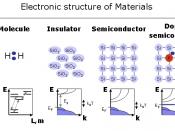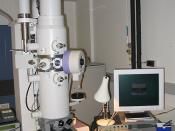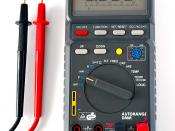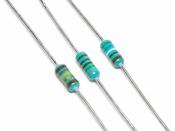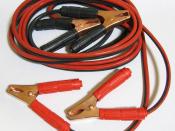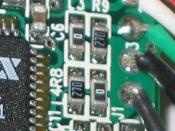Andrew Hayes. 23/10/01.
What Factors Affect the Value of a Resistor? Introduction: Resistance is caused when the 'free electrons' in a wire collide with the vibrating atoms, so losing energy. When the electrons collide with the atoms the atoms vibrate more vigorously and the metal gets hot.
The Variables: The thickness of the wire:- If the wire is thin there will be more resistance than if it was wider because there will be fewer 'free electrons' in the wire to carry the charge so less charge will be able to flow.
The length of the wire:- If the wire is longer, there will be more resistance than if it was shorter because there will be more atoms in the wire for the 'free electrons' to bump into.
The temperature of the wire:- If the wire is hot the resistance will be greater because the atoms will vibrate more vigorously and so the electrons will collide with them more often.
The material used:- Some materials will have more 'free electrons' than others and so will be able to carry more charge making the resistance less. Similarly some will have more atoms than others and so the electrons will collide with them more often, making the resistance greater.
My Chosen Variable: I am going to investigate the length of the wire.
Prediction: I predict that if I increase the length of the wire, the resistance will also increase. I think this because if the wire is longer there will be more atoms in the wire for the electrons to collide with, so causing greater resistance.
I think the graph of my results will look like this: I think this because I predict that the length of the wire will be directly proportional to the resistance of the wire. My reasoning for this is that the rule for resistors in series is that you add the resistance of each resistor to get the final resistance. Each 10 cm strip of wire will have the same resistance so the resistance will go up in equal blocks.
Preliminary Method: Apparatus: Wire, Battery Pack, Crocodile Clips, Digital Multimeter, Wire Cutters, Meter Rule.
Diagram: Method: 1: Set up apparatus as in the diagram above.
2: Using the wire cutters, cut lengths of wire 1 cm, 2 cm, 3 cm, 4 cm, 5 cm, and 6cm long.
3: First take the shortest piece of wire and place it between the two terminals.
4: Now turn on the power and measure the resistance. Record this in your results table.
5: Next take the 2 cm wire and repeat steps 3 and 4 with it.
6: Repeat step 5 with the rest of the lengths of wire.
7: Repeat steps 3-6 two more times.
8: Take an average of your results.
9: Put your results into a graph.
Fair Test Points: To make sure my experiment remains a fair test I will only change my chosen variable. I will use the same diameter wire, 0.27 mm, for each test and I will use the same material. I will also try to keep the temperature the same through out. To eliminate any anomalous results and make my results more accurate I will do the experiment three times and take an average of my results.
Preliminary Results: Conclusions I Have Made From my Preliminary Results: I have decided to use Nickel Chrome for my experiment because copper does not give enough change in resistance. I have found that I do not need to use a battery pack in my circuit. I have also found that going up in 1 cm intervals does not give enough change. Now I am going to go up in 10 cm intervals and so I do not waste lots of wire I will have just one long piece of wire and slide the crocodile clips up and down it. The following is my updated circuit: Also I will find the resistance of 0 cm of wire and take this value away from my results averages to get rid of the resistance in the wires connecting the multimeter.
